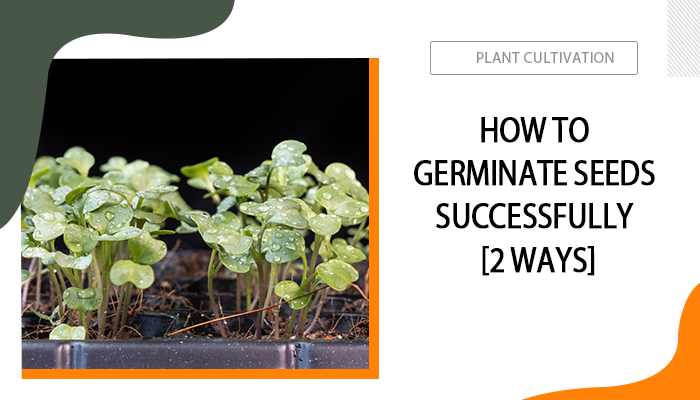Step-by-step Guides on How to Germinate Seeds
Seed germination is a fundamental phase for any plant growth. It's a process that involves coaxing a seed into sprouting and developing into a healthy plant. Commonly, people take it for granted that the germination of seed takes place in the soil. However, in addition to this traditional method, we’ll introduce a new way to germinate seeds by using paper towels or coffee filters. How to germinate seeds with ease? Read on to find out.
Table of Contents
What Is Germination
Germination is the process by which a seed begins to sprout and grow into a new plant. Botanically speaking, seed germination starts when the seed imbibes water, which activates enzymatic and respiratory activities. This is then followed by the digestion, translocation, and assimilation of food and nutrients packed by the embryo. All of these lead to the eventual growth and development of a seedling – a process called sprouting.
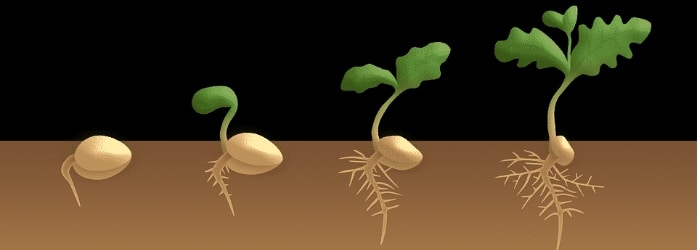
Indoor seed germination allows you to start growing plants earlier in the year, well before the last frost date. This extended growing season is particularly valuable for gardeners in regions with short growing seasons and extremely tough weather.
How to Germinate Seeds with Paper Towels [Easy & Recommended]
It may never occur to you, but whether it’s the paper towel or the coffer filter, both mediums ease seed germination with 4 major advantages.
- Quicker Germination: Compared with growing seeds in the soil, seeds tend to germinate faster on a moist paper towel because they have direct access to moisture. This can be particularly useful when you want to see results sooner.
- Visibility: Clearly, germinating seeds with the towel allows you to closely monitor the germination process. You can easily observe when the seeds start to sprout roots and shoots, which can help you identify any potential issues early on.
- Space Efficiency: The paper towel method requires less space than planting seeds in individual pots or containers. It's also a compact way to germinate multiple seeds simultaneously.
- Preventing Wastage: By germinating seeds on a paper towel, you can select the healthiest and strongest sprouts to transplant into the soil. This reduces the risk of wasting soil, pots, and time on seeds that may not germinate or develop well.
With all being said, let’s see how you can work the magic by germinating seeds with paper towels.
Step 1: Choose Fresh Seeds
Begin with fresh seeds, preferably less than two years old. Review the seed packet for specific instructions, including ideal temperatures and timing for germination.
Step 2: Prepare Your Growing Medium
Select a suitable seed-starting medium. You can use commercial seed starter kits, paper egg cartons filled with a seed-starting mix, or other containers with drainage holes.
Step 3: Plant Your Seeds
Follow the seed packet instructions for planting depth. Generally, plant seeds at a depth twice their width. Lightly press small seeds into the soil or place them on a damp paper towel for quicker germination.
Step 4: Create a Mini Greenhouse
Cover your planted seeds with a plastic bag, plastic wrap, or a clear lid to create a mini greenhouse effect. This helps maintain the temperature and humidity to create an optimal germination environment.
Step 5: Provide a Warm Environment
Place the seed trays or containers in a warm spot with indirect sunlight. South-facing windows work well. Ensure the soil stays consistently moist but not waterlogged. You may use a heating mat to maintain the ideal temperature.
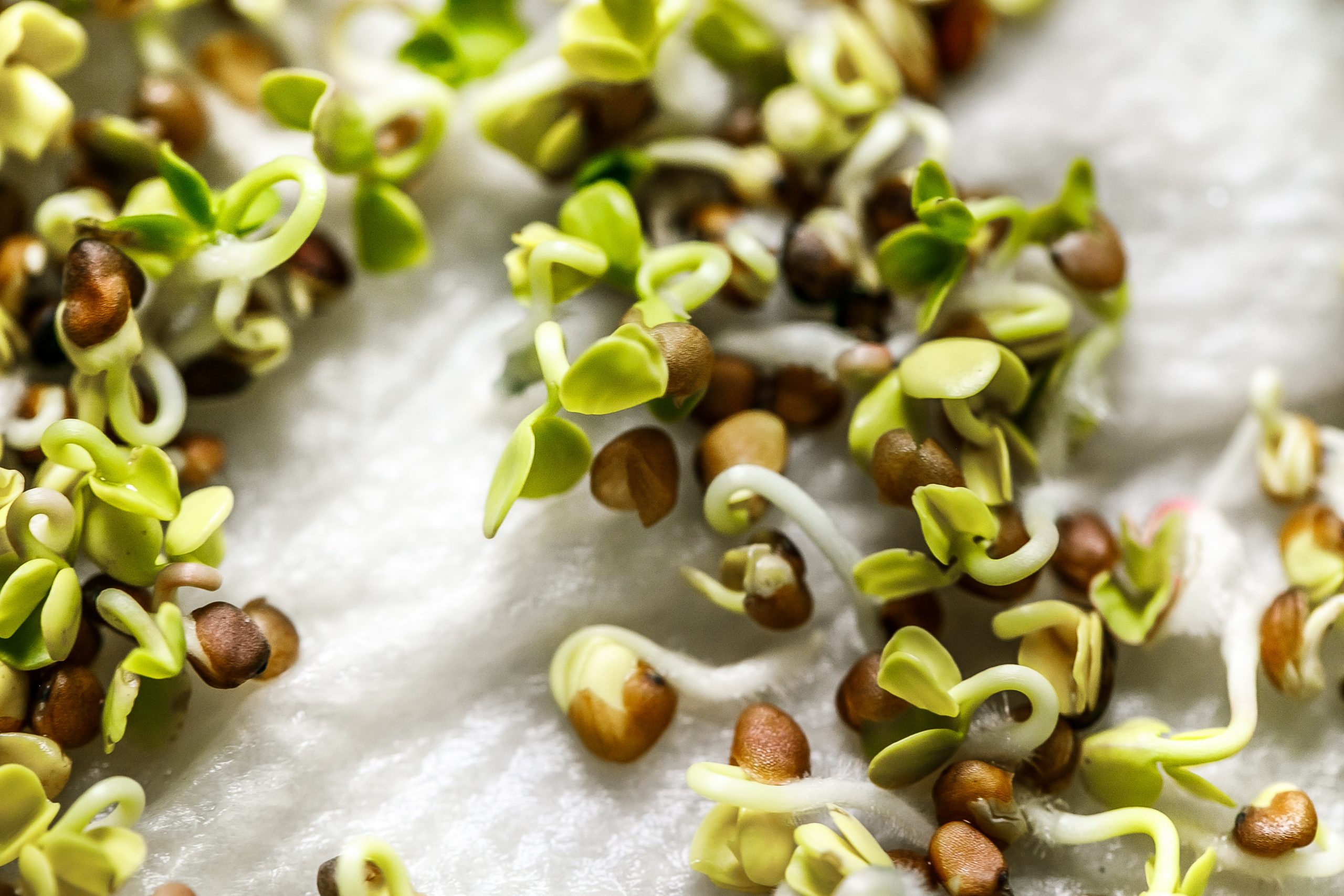
Step 6: Thin and Transplant
Once your seeds sprout and show small roots (if using the paper towel method), transplant them into seedling kits or pots. If you start in soil, thin the seedlings, leaving only the healthiest ones. Keep the soil consistently moist and provide good air circulation.
within a few days to a couple of weeks, depending on the species and growing conditions, you should see seed germination with a high success rate.
How to Germinate Seeds with Soil [Traditional & Time-Consuming]
If you are more into a classic way of germinating seeds, the soil is still a working solution. However, to promote efficient seed germination with soil, especially indoors, these tools are worth considering before making moves:
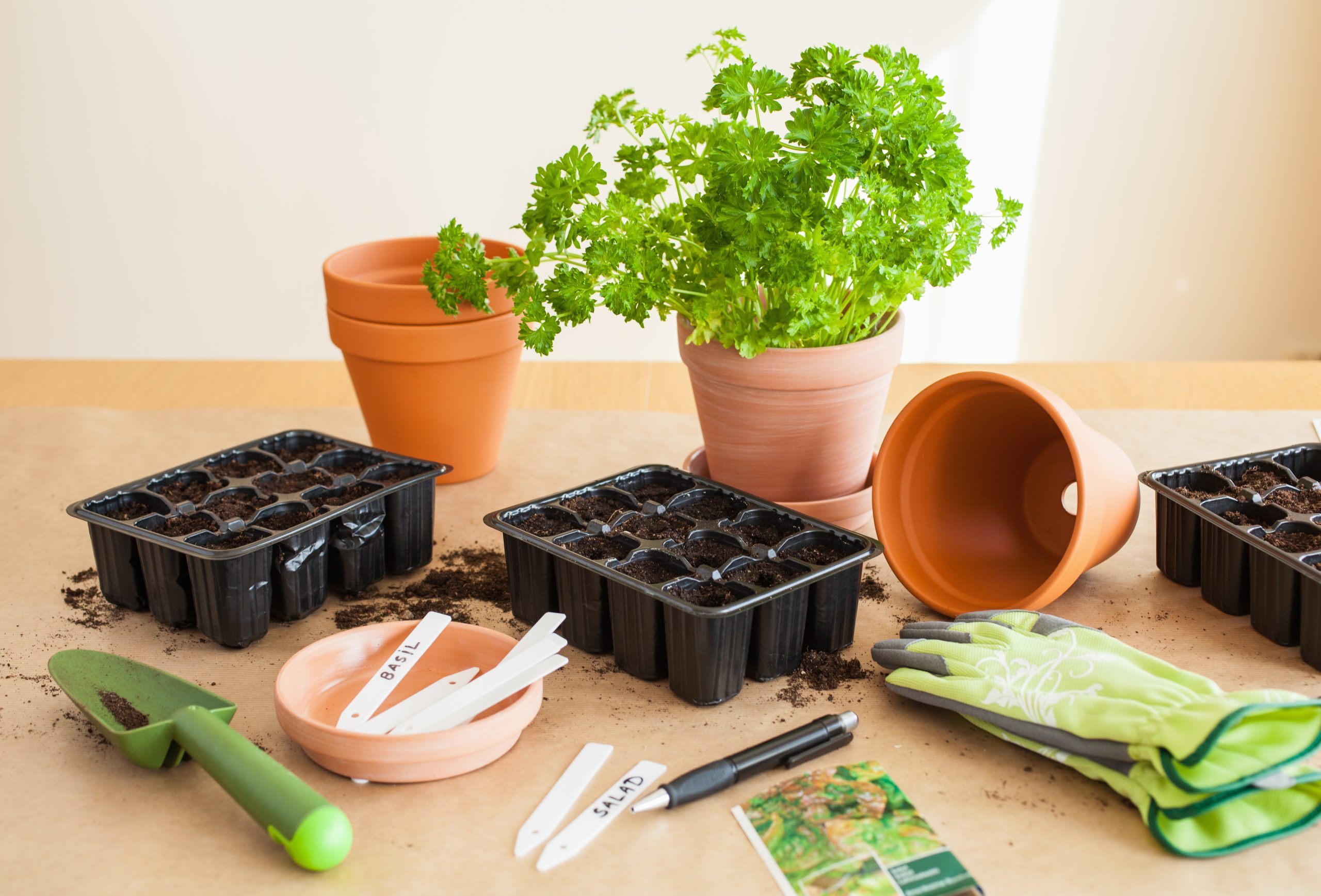
- Seed Starting Trays: These trays without drainage holes enable bottom watering, with heavy-duty options for durability. To recommend one reliable product, Spider Farmer Seed Starting Tray is good to go.
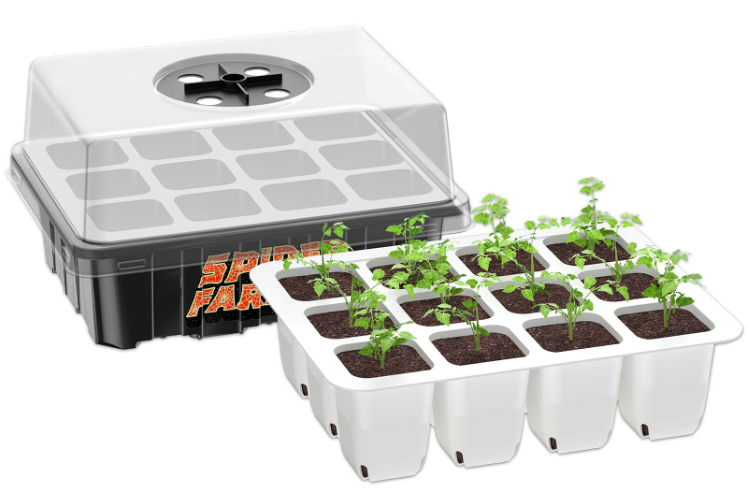
- Seed Starting Medium: Choose a suitable medium based on seed nutrient requirements, either store-bought or homemade using various ingredients like peat moss, vermiculite, perlite, and compost.
- Seedling Heating Mats: Ideal for seeds needing higher temperatures, such as peppers and tomatoes. For those who live in tropical regions, lucky you, you can save the money.
- Grow Lights: Essential for indoor seedlings, grow lights, especially indoor LED grow lights aim at providing consistent and ample light for healthy growth.
Additional seed-starting equipment includes tray covers, misters, labels, and pots for transplanting, but they are all optional. With everything prepared, let’s move on to the practical steps:
Step 1: Select Suitable Seeds
Similar to above, you should choose fresh, viable seeds that are appropriate for your growing conditions and the time of year you intend to plant them.
Step 2: Prepare Containers
Use seed-starting trays, pots, or cell packs with drainage holes at the bottom. Ensure they are clean and sterile to prevent disease or mold issues.
Step 3: Fill Containers
Fill the containers with a seed-starting mix or potting soil. This growing medium should be well-draining and free of contaminants.
Step 4: Plant Seeds
Follow the instructions on the seed packet for planting depth and spacing. Typically, plant seeds at a depth that is twice the width of the seed. For small seeds, lightly press them into the soil surface. For larger seeds, create holes with your finger or a dibble to the recommended depth, then place the seeds and cover them with soil.
Step 5: Water Gently
Water the soil thoroughly but gently after planting to ensure good seed-to-soil contact. Avoid overwatering, which can lead to fungal issues. Use a spray bottle or a fine mist to avoid disturbing the seeds.
Step 6: Create a Mini Greenhouse (Optional)
To create a humid environment and speed up germination, you can cover the containers with a transparent plastic dome or plastic wrap. This helps retain moisture and warmth. A more effective yet pricy way is to purchase a grow tent.
Step 7: Provide Adequate Light
Place the containers in a location with indirect sunlight or under grow lights for vegetables. Ensure they receive the right amount of light as specified on the seed packet. Most seeds require some light to germinate.
Step 8: Maintain Optimal Temperature
Keep the growing environment at the seedling temperature recommended on the seed packet. Generally, a temperature of around 70-80°F (21-27°C) is suitable for most seeds.
Step 9: Keep Soil Moist
Maintain consistent moisture in the soil. Check regularly and water as needed to keep the soil evenly moist but not too wet. Using a misting spray bottle can help prevent overwatering.
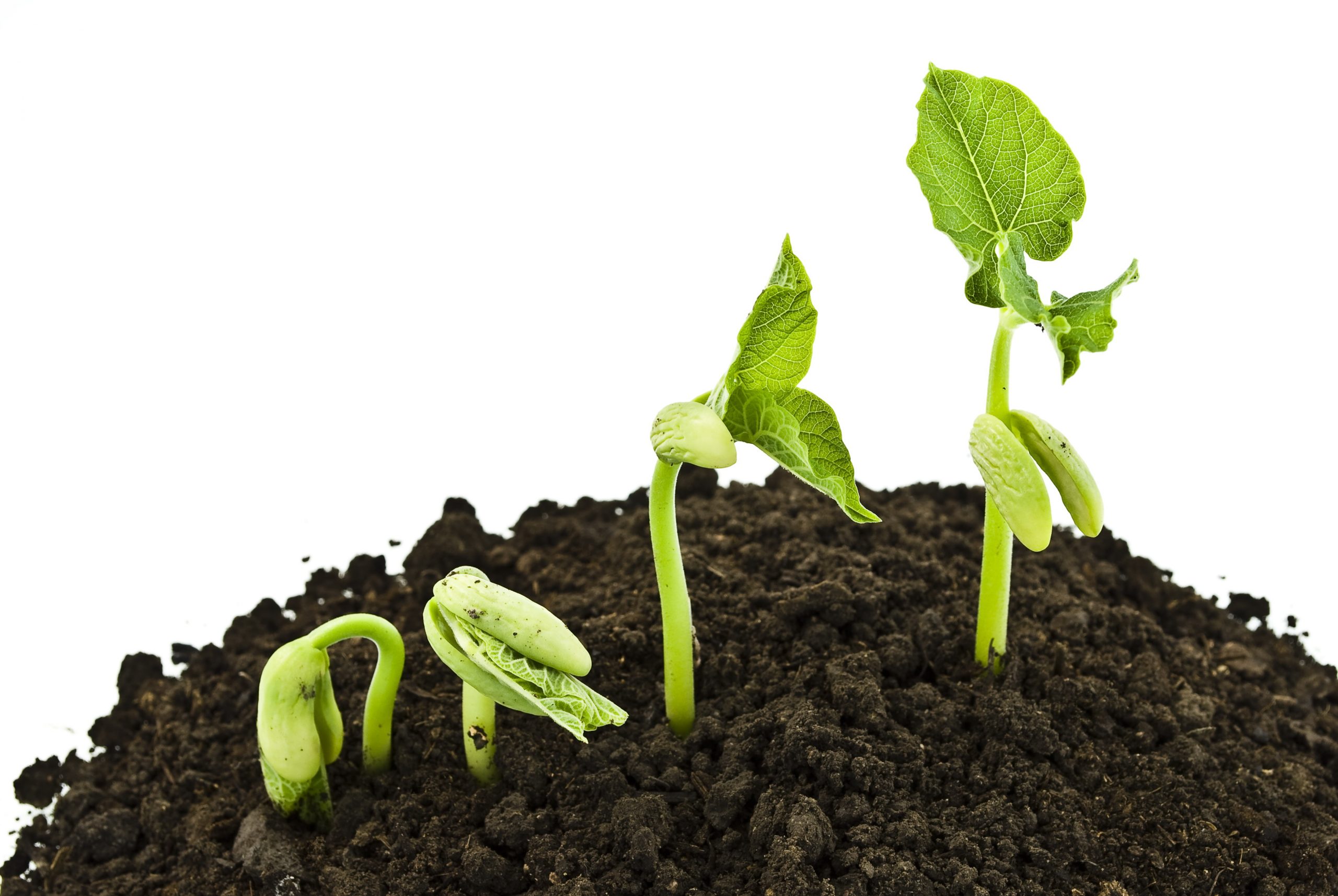
Once your seedlings have grown strong enough and have at least one or two sets of true leaves, they can be transplanted into larger pots or directly into your garden.
Conclusion
Your success as an indoor grower starts right from seed germination. You can only record maximum growth and yield when your seeds germinate properly. By learning how to germinate seeds in two possible ways, you are on a good start. But we have to say, using a paper towel is easier and time-saving than planting seeds in the soil.
FAQs about How to Germinate Seeds
- How Long Does Seed Germination Take?
The time for seed germination varies, typically ranging from a few days to a few weeks, depending on factors like moisture, temperature, and seed type. Vegetable seeds generally take longer (two to three weeks), while flower seeds germinate faster (four to seven days).
- What is the best way to germinate seeds?
The successful germination of seeds depends on four critical factors, each of which plays a unique role in the process:
- Water: Adequate moisture is crucial for seed germination, softening the seed coat, dissolving oxygen, and enabling the conversion of stored food.
- Oxygen: Oxygen is essential for respiration and provides energy for the metabolic processes involved in seed germination.
- Temperature: Specific temperature ranges trigger germination by influencing enzyme activity and metabolic reactions in seeds.
- Light: Light, either natural or artificial, serves as a signal for seeds to initiate growth, directing their energy toward producing leaves and stems.
- Is it better to germinate seeds in a paper towel or soil?
Germinating the seeds in a paper towel is more recommended than in the soil, as it opens a window for observation, real-time monitoring, and a quicker plant-growing stage.
- How can I make my seeds germinate faster at home?
To promote faster seed germination at home, you can first opt for the paper towel medium, and then:
- Pre-soak Seeds (if applicable): Some seeds benefit from pre-soaking in water for a few hours or overnight before planting to soften the seed coat and speed up germination.
- Use Seed Starter Kits: Consider using seed starter trays or kits designed to create optimal germination conditions.




